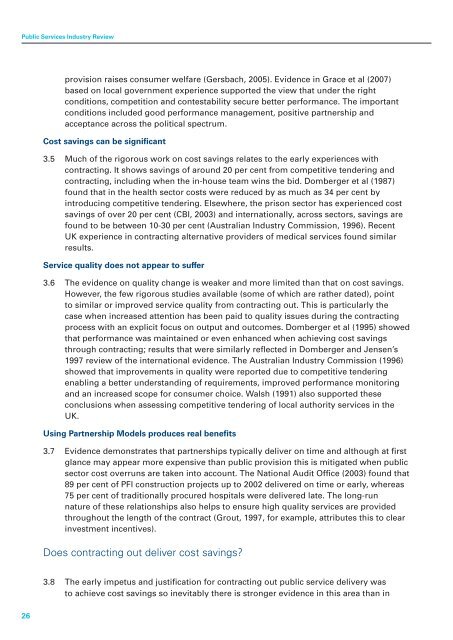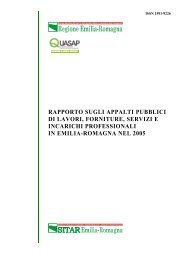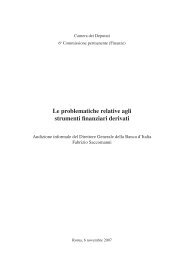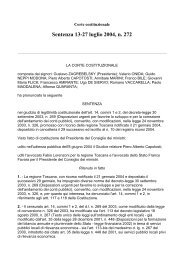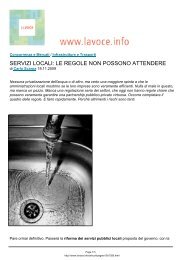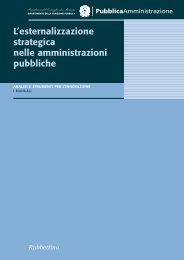Understanding the Public Services Industy
Understanding the Public Services Industy
Understanding the Public Services Industy
You also want an ePaper? Increase the reach of your titles
YUMPU automatically turns print PDFs into web optimized ePapers that Google loves.
<strong>Public</strong> <strong>Services</strong> Industry Review<br />
provision raises consumer welfare (Gersbach, 2005). Evidence in Grace et al (2007)<br />
based on local government experience supported <strong>the</strong> view that under <strong>the</strong> right<br />
conditions, competition and contestability secure better performance. The important<br />
conditions included good performance management, positive partnership and<br />
acceptance across <strong>the</strong> political spectrum.<br />
Cost savings can be significant<br />
3.5 Much of <strong>the</strong> rigorous work on cost savings relates to <strong>the</strong> early experiences with<br />
contracting. It shows savings of around 20 per cent from competitive tendering and<br />
contracting, including when <strong>the</strong> in-house team wins <strong>the</strong> bid. Domberger et al (1987)<br />
found that in <strong>the</strong> health sector costs were reduced by as much as 34 per cent by<br />
introducing competitive tendering. Elsewhere, <strong>the</strong> prison sector has experienced cost<br />
savings of over 20 per cent (CBI, 2003) and internationally, across sectors, savings are<br />
found to be between 10-30 per cent (Australian Industry Commission, 1996). Recent<br />
UK experience in contracting alternative providers of medical services found similar<br />
results.<br />
Service quality does not appear to suffer<br />
3.6 The evidence on quality change is weaker and more limited than that on cost savings.<br />
However, <strong>the</strong> few rigorous studies available (some of which are ra<strong>the</strong>r dated), point<br />
to similar or improved service quality from contracting out. This is particularly <strong>the</strong><br />
case when increased attention has been paid to quality issues during <strong>the</strong> contracting<br />
process with an explicit focus on output and outcomes. Domberger et al (1995) showed<br />
that performance was maintained or even enhanced when achieving cost savings<br />
through contracting; results that were similarly reflected in Domberger and Jensen’s<br />
1997 review of <strong>the</strong> international evidence. The Australian Industry Commission (1996)<br />
showed that improvements in quality were reported due to competitive tendering<br />
enabling a better understanding of requirements, improved performance monitoring<br />
and an increased scope for consumer choice. Walsh (1991) also supported <strong>the</strong>se<br />
conclusions when assessing competitive tendering of local authority services in <strong>the</strong><br />
UK.<br />
Using Partnership Models produces real benefits<br />
3.7 Evidence demonstrates that partnerships typically deliver on time and although at first<br />
glance may appear more expensive than public provision this is mitigated when public<br />
sector cost overruns are taken into account. The National Audit Office (2003) found that<br />
89 per cent of PFI construction projects up to 2002 delivered on time or early, whereas<br />
75 per cent of traditionally procured hospitals were delivered late. The long-run<br />
nature of <strong>the</strong>se relationships also helps to ensure high quality services are provided<br />
throughout <strong>the</strong> length of <strong>the</strong> contract (Grout, 1997, for example, attributes this to clear<br />
investment incentives).<br />
Does contracting out deliver cost savings?<br />
3.8 The early impetus and justification for contracting out public service delivery was<br />
to achieve cost savings so inevitably <strong>the</strong>re is stronger evidence in this area than in<br />
26


